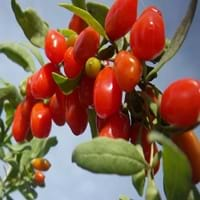Health Benefits
Boosts immune system, Boosts respiratory health, Cancer prevention, Digestive aid, Piles treatment
Anti-oxidant properties, Eye care, Helps in cartilage regeneration, Regulates Blood Sugar, Treatment of osteoarthritis
General Benefits
Beneficial in improving nerve function, Protects against parasites and worms, Relieves pain
Boosts immune system, Digestive aid
Skin Benefits
Anti-aging benefits, Brightens and lightens complexion, Exfoliates skin, Hydrates skin, Treatment of dark spots
Anti-aging benefits, Reduces wrinkles, Treatment of skin diseases
Hair Benefits
Prevents hair loss
Protects hair, Regulates hair growth
Allergy Symptoms
Abdominal pains, Breathing difficulty, Dizziness, Eczema, Fainting, Hives, Itching, Nasal congestion, Swelling of face, Tingling sensation in mouth, Vomiting
Anaphylaxis, Itching, Sneezing, Wheezing
Side Effects
Decrease in blood sugar levels, Induces acid reflux, Allergic reaction, Tooth decay, May form gallstones
May interact with some drugs
Best Time to Eat
Along with meal, As a snack in the late afternoon, Don't consume at night and before bed, Strictly avoid empty stomach
Any time except an hour after meal, Don't consume at night and before bed
Vitamin B5 (Pantothenic Acid)
Vitamin C (Ascorbic Acid)
Vitamin K (Phyllochinone)
Calories in Fresh Fruit with Peel
Not Available
Calories in Fresh Fruit without Peel
Not Available
Calories in Canned Form
Not Available
Not Available
Season
Spring, Summer
Autumn
Varieties
PKM 1, Urigam, Hasanur, Tumkur prathisthan, DTS 1 and Yogeshwari
No Types
Color
Brown, Reddish-brown
Scarlet red
Inside Color
Brown
Orange
Shape
Curving Cylinder
Oval
Taste
Sour-Sweet
Slightly bitter, Tart
Soil Type
Loam, Sandy, Sandy loam, Well-drained
Well-drained
Climatic Conditions
Humid to dry, Rainfall, Warm to hot climate
Cold, Hot
Facts about
- Tamarind is used to prevent body odor.
- African children use the tamarind seeds in games.
- No cases of tamarind toxicity or allergy reported till date.
- Study says a man named Li Qing Yuen used to eat goji berries daily and lived for 252 years.
- They are also known as wolfberries in India & China.
- This fruit is used for spiritual purposes at many places.
Other Countries
Africa, Australia, Brazil, China, Mexico, Nigeria, Sudan, Taiwan
Canada, France, India, United States of America
Top Importer
United States of America
United States of America
Top Exporter
Thailand
China
Botanical Name
Tamarindus indica
Lycium barbarum
Synonym
Tamarindo, tamarindus
Wolfberry
Subkingdom
Tracheobionta
Tracheobionta
Division
Magnoliophyta
Unknown
Subclass
Rosidae
Asteridae
Family
Fabaceae
Solanaceae
Species
Tamarindus indica
L. barbarum
Generic Group
Tamarind Sub
Not Available
Difference Between Tamarind and Gojiberry
We might think that Tamarind and Gojiberry are similar with respect to nutritional value and health benefits. But the nutrient content of both fruits is different. Tamarind and Gojiberry Facts such as their taste, shape, color, and size are also distinct. The difference between Tamarind and Gojiberry is explained here.
The amount of calories in 100 gm of fresh Tamarind and Gojiberry with peel is Not Available and 32.00 kcal and the amount of calories without peel is 239.00 kcal and Not Available respectively. Thus, Tamarind and Gojiberry belong to High Calorie Fruits and Low Calorie Fruits category.These fruits might or might not differ with respect to their scientific classification. The order of Tamarind and Gojiberry is Fabales and Solanales respectively. Tamarind belongs to Fabaceae family and Gojiberry belongs to Solanaceae family. Tamarind belongs to Tamarindus genus of Tamarindus indica species and Gojiberry belongs to Lycium genus of L. barbarum species. Beings plants, both fruits belong to Plantae Kingdom.









